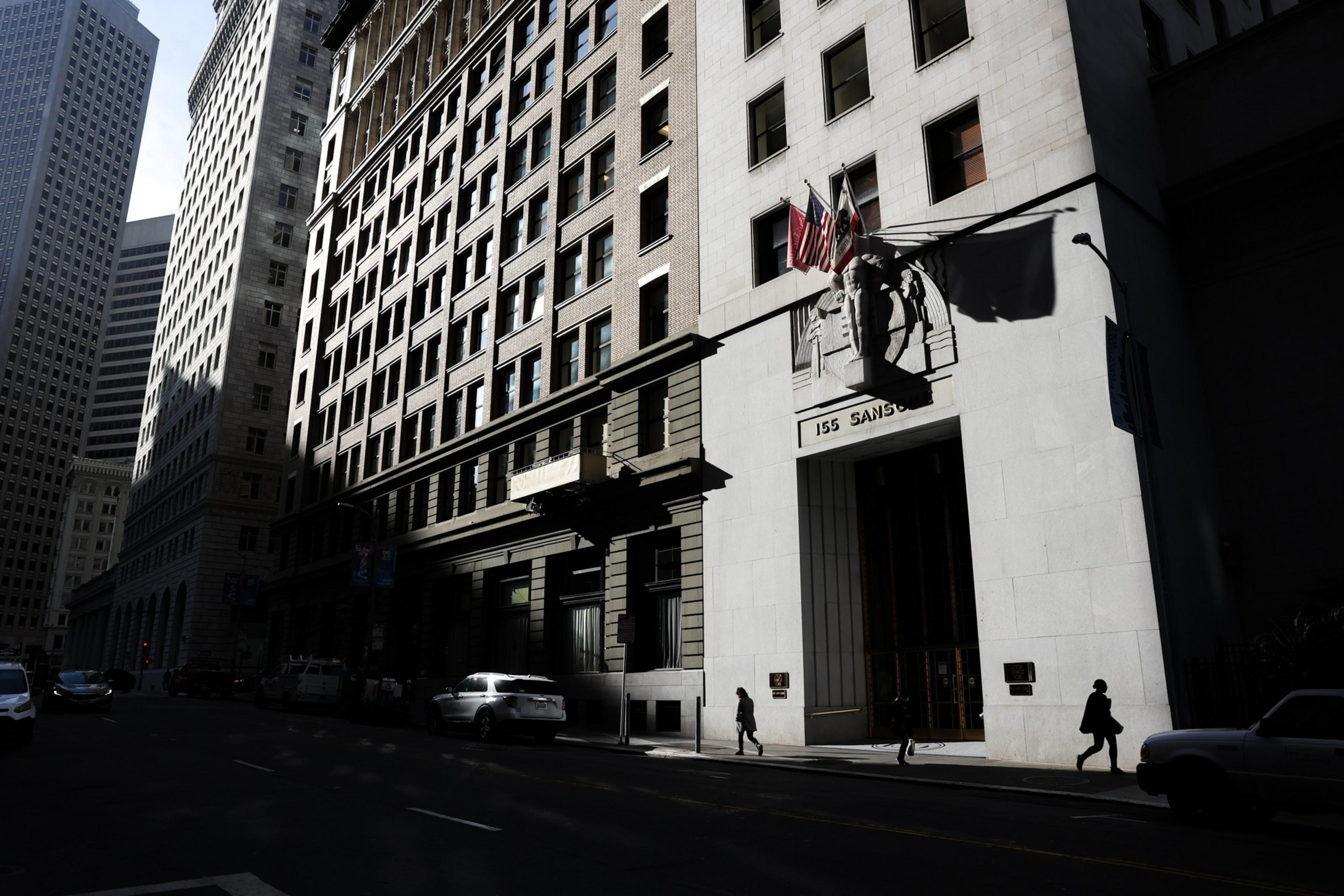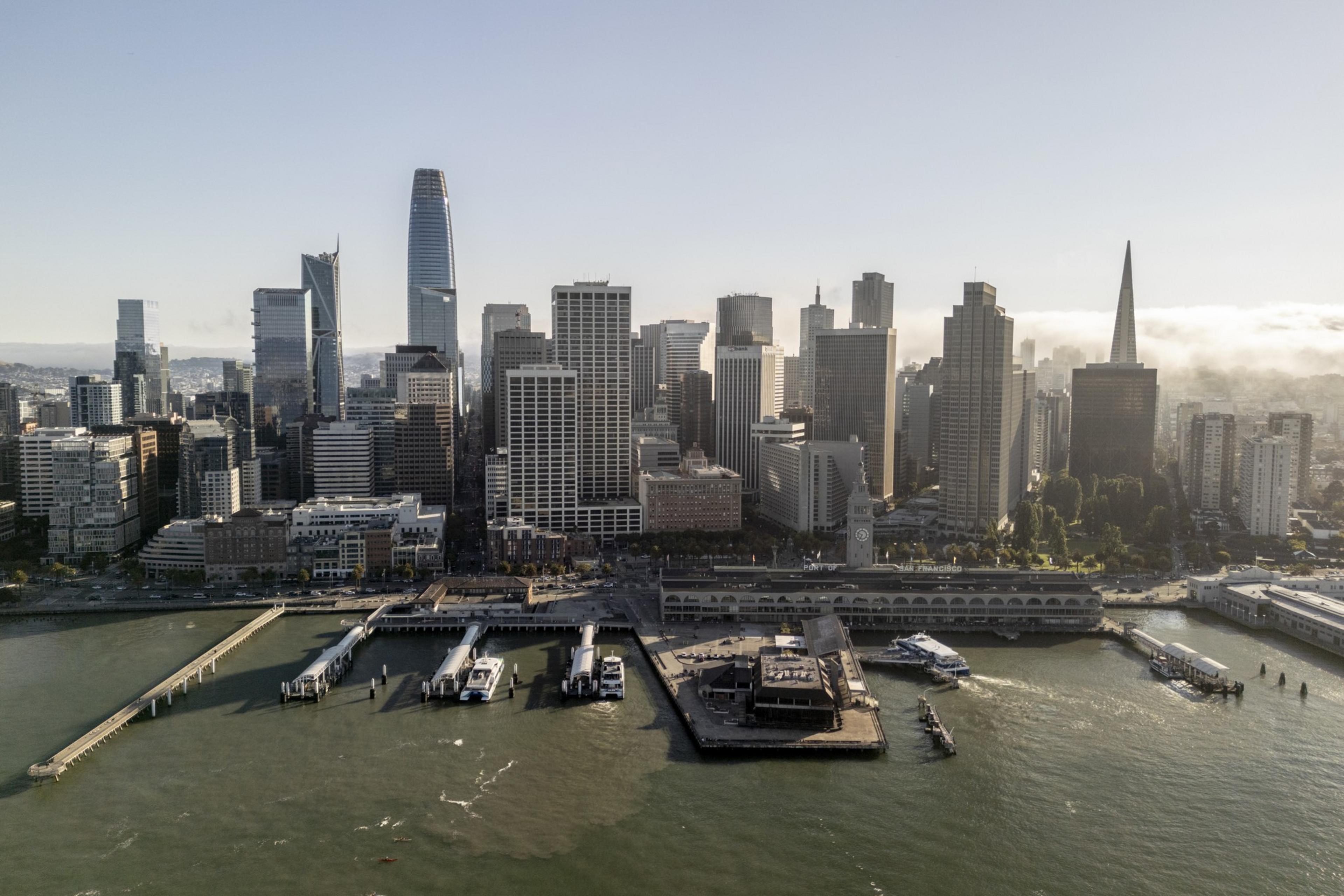There are a few adjectives that come to mind when describing San Francisco’s office market. “Beleaguered” is a favorite of journalists. “Empty” resonates with small business owners. But “red-hot” might be the most accurate descriptor, according to a new report.
Real estate software company VTS released data Wednesday (opens in new tab) that shows “astounding” growth in demand for San Francisco office space in the past year. VTS determines demand by looking at the total square footage (opens in new tab) that tenants are searching for in a given month.
Demand in the city rose 112% from the third quarter of 2024 to Q3 2025 and 60% from Q2 to Q3 of this year, according to VTS, outpacing the pre-pandemic average. The numbers get more dramatic within the tech sector: Office demand from technology companies increased 378% year-over-year and 170% within the last quarter, according to VTS research executive Max Saia.
Unsurprisingly, most of those are venture-backed AI companies. The city has already set a record for startup funding (opens in new tab) months before the end of the year, and a surge in AI-related wealth is shaking up the residential real estate market, too.
“Everyone’s been hearing the hype around AI for quite some time,” Saia said. “But the amount of growth we saw was certainly a surprise to us.”
Those red-hot growth rates may surprise anyone who has wandered through downtown lately, given that roughly a third of the city’s office space remains vacant. But the VTS report tracks the start of a prospective tenant’s journey, when they’re just starting to tour office space, Saia said. San Francisco’s sky-high demand won’t instantly translate to crowded offices, packed BART trains, or long lunch lines. It will take time for deals to get done — and even longer to fill up the city’s many empty offices.
“It will turn into positive leasing and net absorption eventually for sure, but there’s still a huge supply overhang,” Saia said. “We’ll have to see multiple quarters of this magnitude before we start to feel like we’re on a true trajectory back to normal. And it will take years to recoup everything that was lost.”
Still, SF is far and away the most in-demand office market in the country right now, at least according to VTS. New York has the second-highest level of demand, though its rate fell quarter-over-quarter (although that’s in part because that market fell less dramatically during Covid and recovered faster).
Other firms are tracking similar increases in demand for office square footage. “We’re well above our historic average,” said JLL’s Alexander Quinn (opens in new tab). He said approximately 8.5 million square feet of office space is in demand now, versus 6.7 million square feet in July 2018. “What’s compelling to me is that this is even after we’ve had a pretty robust 12-month rolling average of leasing activity.”
The spoils of the increased demand won’t be evenly distributed across buildings or neighborhoods. The hottest commodities are newer buildings in desirable locations that are move-in ready, according to CBRE’s tech insights director, Colin Yasukochi. Great views, too, are in high demand, whether of the Ferry Building, the bay, or the Golden Gate Bridge.
It’s still a tenants’ market for buildings that aren’t considered trophy or Class A, Yasukochi added. “Typically, the landlord’s still going to offer a good amount of free rent upfront and give them some money to customize the space,” he said. “Yes, there’s competition, but deals are still going to be pretty generous by historical standards.”

Meanwhile, some ugly stepchild buildings may sit on the market indefinitely. If a space needs a lot of work, has few amenities, or the owner can’t afford improvements, it’s not likely to be leased anytime soon. That dynamic can force bargain-basement building sales.
“We’re starting to see a lot more office buildings start to trade, which can have its own positive feedback loop, since buyers can fix them up and then lease them to higher-quality tenants,” Saia said of the recent sales. “That can really start to benefit the city in both directions, since if you have higher-quality real estate, you have higher-quality tenants.”
Ultimately, experts agree, there’s plenty of reason for optimism, but the city isn’t out of the woods yet.
“We still have over a third of the space vacant in San Francisco, which is well above any historic norm, and pricing has gone down dramatically,” Quinn said. The demand for space, driven in part by return-to-office mandates, shows “real positive signs for the city,” he added. “But we still have a long way to go.”
